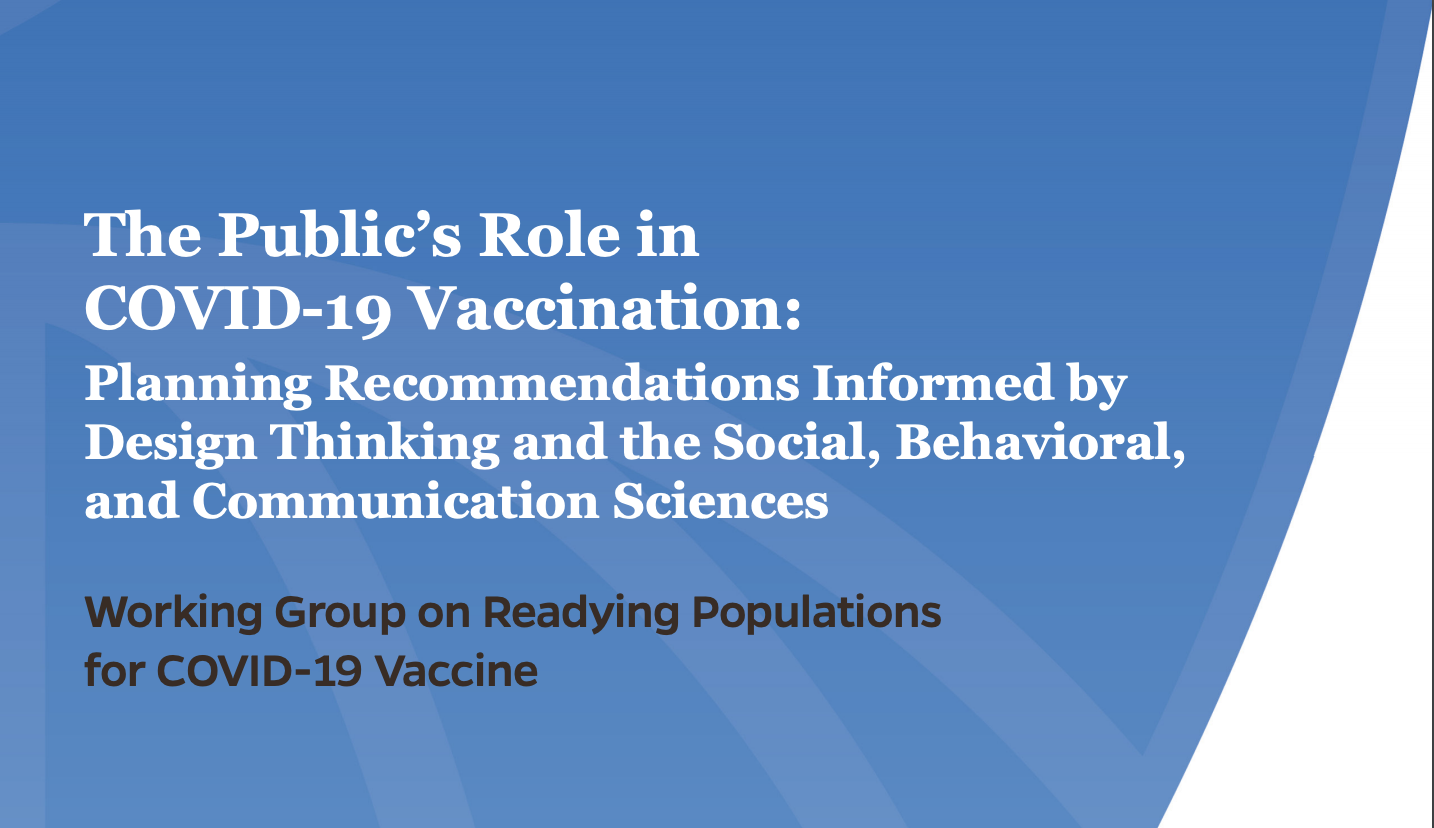The public’s role in COVID-19 vaccination

The Public’s Role in COVID-19 Vaccination: Planning Recommendations Informed by Design Thinking and the Social, Behavioral, and Communication Sciences
By Schoch-Spana M, Brunson E, Long R, Ravi S, Ruth A, Trotochaud M on behalf of the Working Group on Readying Populations for COVID-19 Vaccine
The Johns Hopkins Center for Health Security (in collaboration with the Texas State University Anthropology Department)
9 July 2020, 47 pages
(Related:
– Mistrust of a Coronavirus vaccine could imperil widespread immunity, The New York Times, 25 July 2020)
– The orientation of Italians towards possibile vaccination against COVID-19: between propensity, doubts and concerns, English translation on this blog)
This report considers human factors in relation to future vaccines against the novel coronavirus (SARS-CoV-2), drawing on insights from design thinking and the social, behavioral, and communication sciences. It provides recommendations – directed to both US policymakers and practitioners, as well as nontraditional partners new to public health’s mission of vaccination – on how to advance public understanding of, access to, and acceptance of vaccines that protect against COVID-19.
Problem
The protracted COVID-19 pandemic has placed multiple stresses on the US public: the threat of illness and death, the isolating effects of physical distancing measures, and the uncertainties and hardships associated with disrupted economic activities. People’s resilience is being sorely tested. Operation Warp Speed (OWS) is taking extraordinary steps to develop SARS-CoV-2 vaccines as swiftly as possible and, along the way, to inspire hope that relief is coming. Despite vaccination’s promise of release, some Americans – including those most at risk of COVID-19 impacts – may miss out on, or opt out of, this life-preserving public health measure. Some may worry about whether SARS-CoV-2 vaccines are safe or if they work at all. Some may be mistrustful of vaccine manufacturers, the agencies that regulate the industry, and/or the public health authorities recommending the products. For others, the issue may be access: Will a COVID-19 vaccine be affordable, easy to get to without losing wages or taking public transportation and risking infection, and/or provided in a place that feels safe? Under these circumstances, what can be done to ensure that target populations benefit from SARS-CoV-2 vaccines? With the current lag time in vaccine availability, US vaccination planners and implementers can exercise foresight and take proactive steps now to overcome potential hurdles to vaccine uptake.
Cross-Cutting Recommendation: Put People at the Center of a Revolutionary SARS-CoV-2 Vaccine Enterprise
US research requires reconfiguring to value the contributions of both bioscience and social and behavioral science to inform SARS-CoV-2 vaccine development. If embedded within the COVID-19 response, rapid social, behavioral, and communication science can deliver timely data and empirically based advice to support vaccine delivery strategies and uptake. In the SARS-CoV-2 vaccine enterprise, communities can be active research partners, rather than passive study subjects. Finally, human-centered design principles (aka “design thinking”) can help improve the planning and implementation of the COVID-19 vaccination program.
Recommendations
- Understand and inform public expectations about vaccine benefits, risks, and supply
- Earn the public’s confidence that vaccine allocation and availability are evenhanded
- Make vaccination available in safe, familiar, and convenient places
- Communicate in meaningful, relevant, and personal terms, crowding out misinformation
- Establish independent representative bodies to instil public ownership of the vaccination program



